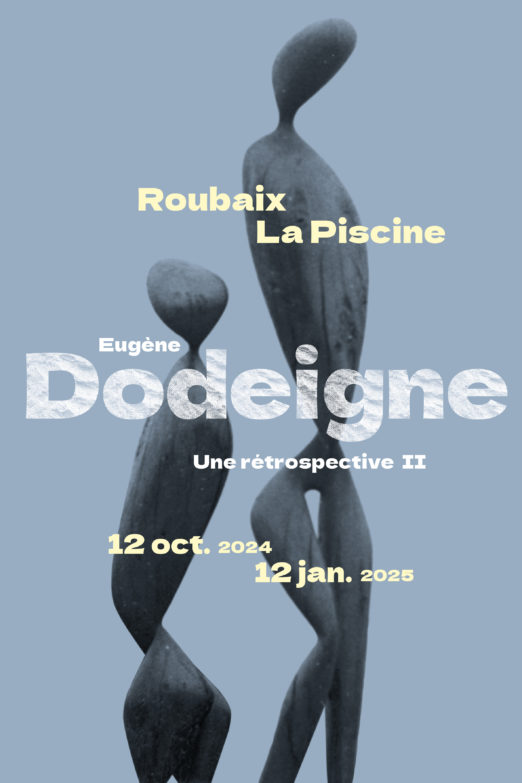Eugène Dodeigne (1923-2015): a retrospective II
Exhibition from 12 October 2024 to 12 January 2025
With close to 200 works, many of which have never been seen before or are rarely exhibited, coming from public and private collections, this first retrospective devoted to the works of Eugène Dodeigne aims to revisit a key player in the French artistic scene of the second half of the 20th century. Initially planned for 2020 at La Piscine, the exhibition was unable to open its doors to the public because of the pandemic. Exceptionally rescheduled for this autumn with a new presentation created specifically for the occasion as well as some new loans, this retrospective is a unique opportunity to discover a revised portrait of the artist and take another look at the full breadth of his work.
Born in Belgium in 1923, Dodeigne soon became a legal citizen of France while his parents settled in the Nord region. Born into a family of stone cutters from the Soignies region, stone was very much part of his life from a very early age. Having learned the trade from the age of 13 with his father, a marble worker, he showed promise and was spotted at the School of Fine Arts of Tourcoing and subsequently at its counterpart in Paris, where he began his journey to become an artist. He soon secured the support, at the end of the 1940s, of the major regional collectors, such as Jean Masurel and Philippe Leclercq. Represented by the Dujardin and Renar galleries in Roubaix, it was at the Marcel Evrard gallery that he held his first personal exhibitions in 1952 and 1955. From this period onwards, the exhibitions came thick and fast, and Dodeigne’s works were acclaimed not only in Paris, but also in Belgium, the Netherlands and Germany.
The goal of the exhibition is to take a fresh look at certain reductive preconceptions about the artist that may have arisen because his work is so ubiquitous in the public space. Indeed, his expertise as a stonemason extended to blue stones – the famous Soignies limestone, his so-called “stones of eternity” – but also the Euville limestone, as well as volcanic and chalky rocks. He was a craftsman and promoter of split stone, as well as being a devotee of polished stone. In addition to being a sculptor of stone, he worked on wood, was a modeller and a bronze worker. In addition to his work as a sculptor, he drew, painted and engraved, was an architect-builder, furniture designer and photographer. In short, there is something baffling about Dodeigne. On the one hand, he was eminently classical, through his affiliation with medieval sculpture or the works of Rodin, Bourdelle, Zadkine or Brâncuși, his desire to continue to erect statues and his attachment to the human form, and finally through his strong work ethic. On the other hand, he was fiercely independent, treading a unique path in which his works originated from both nature and artifice in equal measure. Linked to their environment, Dodeigne’s works bear the visible sign of the artist’s hand and the tool used because, as he asserted, “sculpture is abstract, first and foremost. It is a relationship of different shapes and passages of light.” The exhibition will recount the journey of someone who, throughout his life, never stopped exploring the relationship between the work of art and space, from the primitivist plaster and wood of the beginnings to the monumental creations designed for outdoor spaces exposed to light and wind.
Equally, as one of the greatest sculptors of the second half of the 20th century and one of the least known in his own country, Dodeigne nevertheless remained misunderstood by the institutions of France for a long time. The aim of this tribute is to highlight how the contribution of Dodeigne – the man from the Nord whose art is inseparable from the creativity of the region – is still relevant today.
Scientific curator: Germain Hirselj, art historian
Curator: Bruno Gaudichon, honorary head curator, Alice Massé, then Adèle Taillefait, curator of the final arts collections at La Piscine – André Diligent museum of art and industry
Scenography: Cédric Guerlus – Going Design
The catalogue published by Editions Invenit, that is headed by Germain Hirselj and was awarded the prestigious prize of the International Art Books Festival in 2021, will come out in a new revised and expanded edition for the occasion.
The scenography was completed thanks to the generous support of Tollens paint.
Preview on Friday 11 October 2024 from 6pm.



